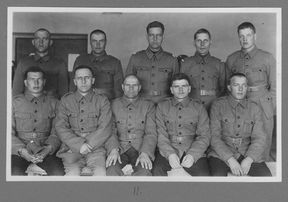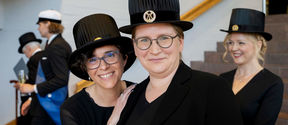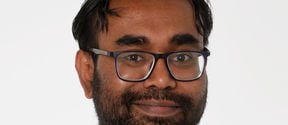WarSampo publishes new Linked Open Data on the over 4,000 Finnish prisoners of war in Soviet Union

Aalto University, the Association for Cherishing the Memory of the Dead of the War, the National Archives of Finland and Helsinki Centre for Digital Humanities HELDIG have published the Finnish Prisoners of War in the Soviet Union during 1939–1945 online service in honour of the 80th-anniversary commemoration of the Winter War. The service compiles detailed data on over 4,000 Finnish prisoners. This is the first time when an online service publishes data of war prisoners who either died in the Soviet Union during 1939–1944 or returned alive to Finland.
The application is based on a national project on war prisoners (Kansallinen sotavankiprojekti) carried out during 2016–2017. It aimed at creating an extensive, open data and online service on Finnish prisoners of war in the Soviet Union, using modern Semantic Web technologies. The finalisation of the work and development of the service has been continued during 2018–2019. Semantic Web is a mega trend on the Web, where web content is gradually turned into Linked Data that can be “understood” by machines. This enables web contents to be enriched with each other by data linking and the development of AI-based intelligent systems.
The Prisoners of War data service and semantic portal has utilised archival material from Russia, and it includes a range of entirely new data. The service consists of Russian prison documents from Finnish prisoners of war, Winter War prisoner records and interrogation forms from the Continuation War that have been translated into Finnish. The data also includes the digitised versions of the Russian Sotilaan ääni magazine, which was published in Finnish, along with dozens of uncut interviews carried out with former prisoners of war during 1999–2000.
In the application, all prisoners of war have their own ‘home pages’ with links to all information available about them in WarSampo. The Linked Open Data service and application can be utilised by researchers as well as other persons interested in war history, such as the relatives of the prisoners. In addition to data, the application provides tools that can be used for calculating statistics on prisoners of war and visualising information, too.
The Prisoners of War application is an extension of WarSampo, a massive online service based on Semantic Web that publishes and links Finnish contents on the Winter War and Continuation War. Published in 2015, WarSampo has become a highly popular service.
‘The service has seen over 570,000 users, which means that approximately 10 per cent of Finns have visited the online service site,’ says Eero Hyvönen, Professor at Aalto University and Director of Helsinki Centre for Digital Humanities (HELDIG) at the University of Helsinki. The system is developed and maintained by researchers at Aalto and HELDIG. In summer 2017, WarSampo won the international LODLAM Challenge, a Linked Open Data competition in Venice.
The new Prisoners of War application has been designed and implemented by researchers of the Semantic Computing Research Group (SeCo) at Aalto University and HELDIG, together with experts from the National Archives of Finland and the Association for Cherishing the Memory of the Dead of the War. The work of the national project on war prisoners has been supported by the Jenny and Antti Wihuri Foundation, the Support Foundation for National Defence, Memorial Foundation for the Dead of the War and Sotavahinkosäätiö (Foundation for War Damage).
The application was published on Friday 29 November at an open event at the National Archives of Finland. The service can be used at https://www.sotasampo.fi/en/.
Another related service by the same research group, WarWictimSampo 1914–1922 at https://sotasurmat.narc.fi/, was published just a week earlier, and has also received plenty of interest, gathering 15,000 users in just two days. ‘The feedback channel received dozens of contacts regarding information on those who fell in the wars. Relatives of the victims of the Civil War of 1918 were particularly active in providing feedback,’ Hyvönen says.
Additional information
Project websites (in Finnish):
Prisoners of War 1939-1945: https://seco.cs.aalto.fi/projects/sotavangit/
WarWictimSampo 1914-1922: https://seco.cs.aalto.fi/projects/sotasurmat-1914-1922/
Eero Hyvönen
Professor, Department of Computer Science at Aalto University
Director, Helsinki Centre for Digital Humanities HELDIG
Tel. +358 50 384 1618
[email protected]
- Published:
- Updated:
Read more news

IoT Forge donates EUR 1 million to the School of Engineering
The donation will be used for research and education on the Industrial Internet and digital twins.
Join us for the first Aalto Open Science Award Ceremony
All Aaltonians are welcome – no registration required!
Doctoral education pilot arouses wide interest among applicants and corporate partners
The doctoral education pilot has got off to a fast start.